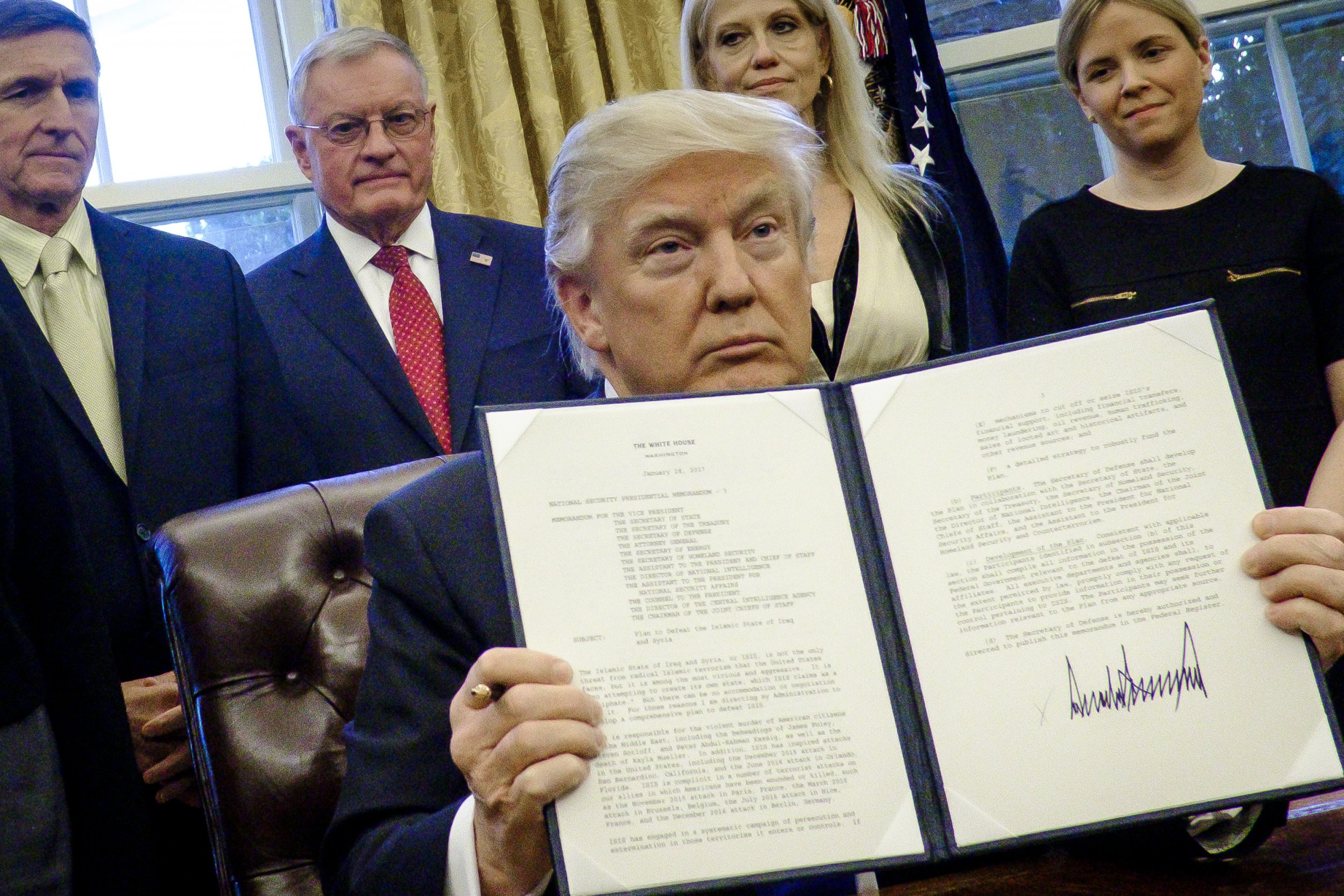
This article first appeared on the Dorf on Law site.
Having spent the previous weekend parsing President Donald Trump's evil executive orders, it is a pleasure to consider one that is possibly merely stupid.
Last Monday, Trump issued an order that requires, to the extent permitted by law, that each time a federal agency promulgates a new regulation, it must eliminate at least two old ones, and the cost of the new reg must not exceed the cost of the eliminated regs.
On its face, the two-for-one requirement is easily evaded. Suppose you run the National Highway Traffic Safety Administration and you have on the books a reg requiring that new cars be equipped with airbags and another reg requiring that new cars be equipped with backup cameras.
You want to add a reg requiring that new cars be equipped with vehicle proximity sensors, which alert the driver of a nearby car that could lead to an accident. You scour the existing regs and can't find any that you think should be eliminated.
As I read the order, there is nothing to stop you from "eliminating" the airbag reg and the backup camera reg and then replacing them with a new reg requiring airbags, backup cameras and vehicle proximity sensors.
Presto! Two regs replaced by one that is really three!
To be sure, the order authorizes the director of the Office of Management and Budget (OMB) to formulate "standards for determining what qualifies as new and offsetting regulations." Presumably, there will be some effort going into figuring out when a new reg is "really" an old reg plus a new reg. But given that most regs do more than one thing, this process may be more complicated than it at first appears.
Related: Michael Dorf: How to survive Trump and stay sane
The real bite of the order probably comes from the cost limits, but here too it could be circumventable. What is the cost of my hypothetical vehicle proximity sensor reg?
Suppose that once manufacturing is scaled up, it costs a car company $300 per vehicle to add proximity sensors. But suppose also that once they buy the new cars, consumers discover that they really like the proximity sensors, so much so that at the margin, a person who could afford a car costing at most $20,000 will choose to forgo $300 worth of options he otherwise would have purchased (a sunroof, say, or a deluxe stereo system).
As a result, there is no suppression of demand for new cars, and thus the car companies are able to pass on all of the extra $300 in compliance costs to the customers. The net cost of the reg is $0.
And that doesn't even take account of the social benefits, like the fact that the proximity sensors save lives of drivers and passengers as well as reduce medical and other financial costs of accidents.
Under President Bill Clinton's Executive Order 12866, which updated Reagan administration policies, new regs are already subject to centralized Office of Information and Regulatory Affairs cost-benefit analysis. Thus, any reg that can survive OIRA review can be said to necessarily have, at most zero, net cost because its benefits must outweigh its costs. So it's possible that the cost provisions of Trump's two-for-one order do literally nothing.
Now, to be candid, I doubt that the Trump OMB will construe the order that way. Because the order repeatedly refers to "costs" without ever referring to benefits, OMB will likely say that a reg can survive only if its costs do not exceed the costs of the two or more regs it replaces, without any regard to the benefits of either the eliminated or the new regs.
What's more, we can expect the Trump OMB to take a narrow view of compliance costs. In my example above, OMB could score the proximity sensor reg as having a cost of $300 because that's the cost of manufacturing, even though the car companies (in my hypothetical) fully recoup that cost.
But even though that's what the Trump OMB is likely to do, the order itself doesn't require that approach.
Consider another example. Suppose that a reg says that new car bodies must be made from high-strength aluminum. Suppose the cost of such aluminum per car is $1,000. Suppose further that prior to the reg, car bodies were made from steel, also at a cost of $1,000 per car.
We can imagine Trump's OMB scoring the aluminum reg as "costing $1,000," but that's idiotic, given that the real net cost is $0. And there's no sound economic reason to distinguish the net cost appraisal in this example from the net cost appraisal in my proximity sensor example.
So, yes, expect the Trump OMB to use the two-for-one order as a cudgel to block regulation, but don't attribute that to the text of the order, which is every bit as badly constructed as the more evil orders on immigration released January 27.
Also, as law professor Dan Farber points out, don't expect the order to have much practical impact because it probably affects only discretionary rules, which Trump wasn't going to issue anyway.
Michael C. Dorf is the Robert S. Stevens professor of law at Cornell University. He blogs at dorfonlaw.org.
Uncommon Knowledge
Newsweek is committed to challenging conventional wisdom and finding connections in the search for common ground.
Newsweek is committed to challenging conventional wisdom and finding connections in the search for common ground.
About the writer
To read how Newsweek uses AI as a newsroom tool, Click here.








